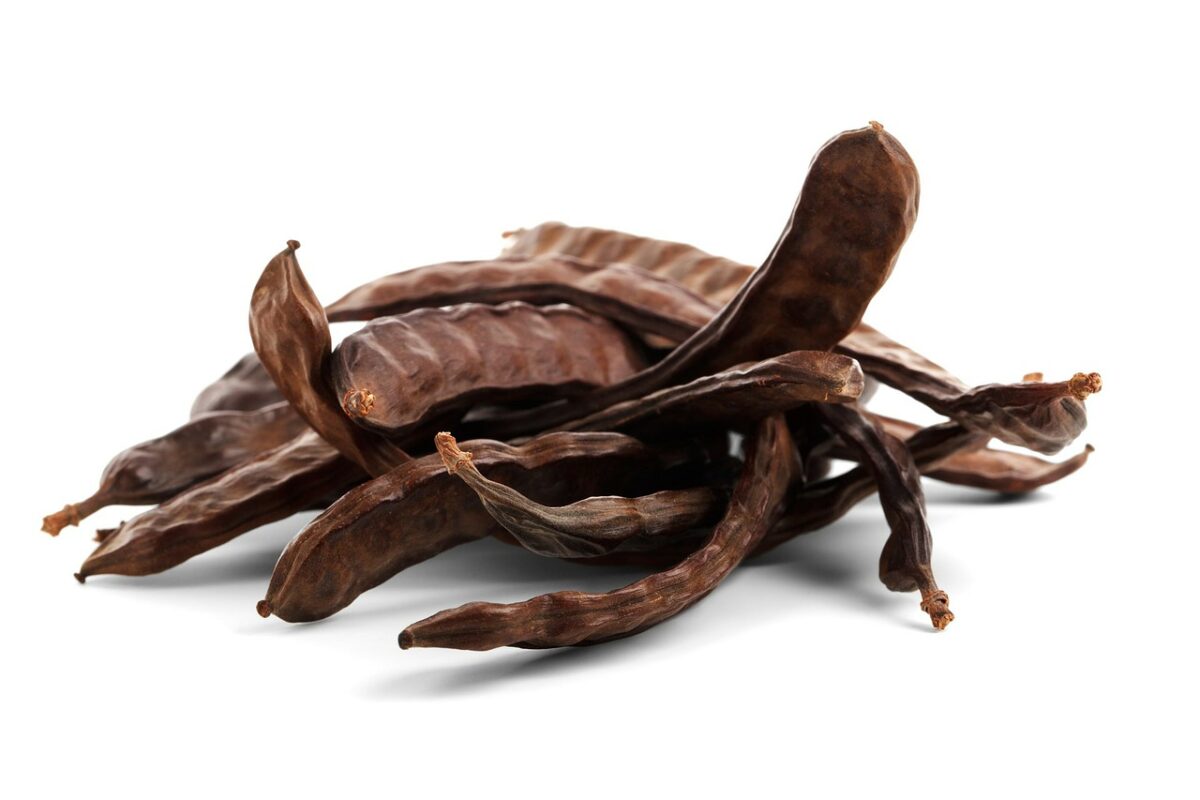The carobs are the fruits of the carob tree, a tree that grows up to 10m in height in the temperate and subtropical regions. Rosemary looks like green pods before it dries, and dark brown after it dries. Carob fruits have been known since ancient times and are also recorded in the Bible. It is said to have been the main food of St. John the Baptist in his years of rebellion, that is why redhead is also known as “St. John’s bread”. In ancient Egypt, the carob has been used as a sweetener; syrup of tomato is still a traditional drink during Ramadan; on the Mediterranean islands syrup is a traditional medicine for cough and sore throat.
However, the carob pods were mainly used as feed for animals, except for periods of famine or war, when they were part of the human diet. Carob pods were an important source of sugar before the sugar cane and sugar beet became widely available.
Nowadays, the carob are used in the dry state, sometimes whole, but mostly in the form of flour / powder, syrup or tea. The roasted and ground tomato slice is used as a cocoa substitute. The extract of carob is a food additive (E 410) 100% natural, healthy, non-toxic, which is used as a thickener and stabilizer used in the various food products (alcoholic and non-alcoholic beverages, dairy products, ice cream, sweets bacon, pudding, meat products and others).
What nutrients contains this powder?
Carob powder is an important source of calcium. Besides calcium, it also contains moderate amounts of minerals such as phosphorus, sodium, potassium, iron and manganese, vitamins such as E, B6 and folate. It has its own sugars, similar to those of fruits, with a sweet and sweet taste. This powder has a huge antioxidant level. It induces basicity in the body, being an alkaline food that does not stimulate gastric acidity. It also has expectorant properties. Contains no gluten or lactose. Among the beneficial effects of it we mention:- it does not contain caffeine, so it does not have an exciting or irritating effect, which makes the cocoa powder the perfect substitute for cocoa in baby food and children- acts as an antioxidant- improves digestion, opposes bloating and can be used to treat diarrhea in babies or children and adults- is used to treat cough, flu and anemia- is rich in calcium and phosphorus, therefore it is used in the fight against osteoporosis.
When can it be introduced into the baby’s diet?
Carob powder can be introduced into the diversified diet of the baby after the age of 8 months. Because it does not contain gluten or lactose, the carob powder is very well tolerated by babies. However, our recommendation is that you consult your baby’s pediatrician before introducing carob powder into a diversified diet and adhere to the 4-day rule.
How to keep the carob powder?
When purchasing carob powder, make sure that the packaging is sealed and that it does not have any traces of storage in a wet place. The carob powder is kept for several months (up to 1 year) in cool, dry places.
Sources:
http://nutritiondata.self.com/facts/legumes-and-legume-products/4324/2
http://www.carobfruit.com/uses.htm
http://www.herbsarespecial.com.au/free-herb-information/carob.html
Image by PublicDomainPictures from Pixabay
